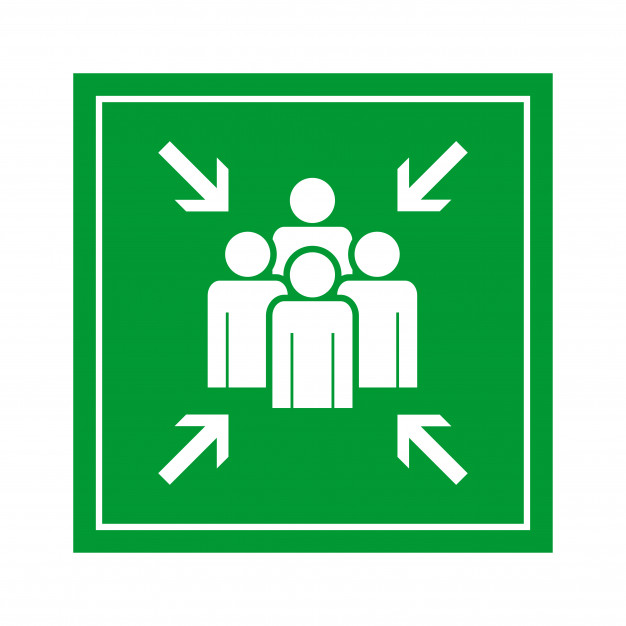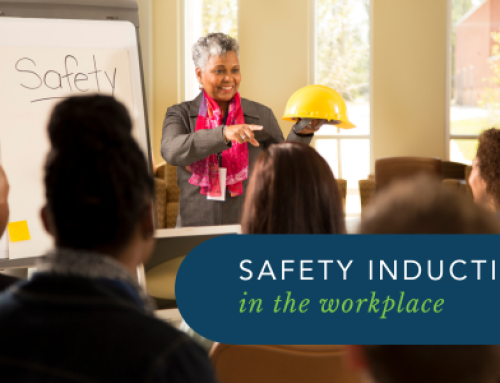You have probably seen the green sign saying Assembly Area and hopefully have gathered there during evacuation exercises. How do we know that this is the most appropriate location for your facility and what should we consider when coming up with perhaps a better alternative?
Too often we just accept that our Assembly Area is totally okay without considering if a better alternative is available. When was the last time your organisation reviewed its Assembly Area location?
After identifying an emergency our initial response, the priority is to remove all people in the building away from the immediate danger as quickly and as safely as possible.
Occupants will be evacuated from the area of danger to a safer location. After this is achieved, we then need to account for all occupants from the building.
This is where having the right Assembly Area becomes very important. The Assembly Area is where all occupants will be accounted for and where they can be safely kept and managed whilst the emergency is being dealt with.
Depending on your facility and site layout, you may have a muster point where you can gather occupants together and check that everyone is still there and okay before moving on to the Assembly Area. The muster point will be a location that is far enough away from the danger to be safe to allow for a quick check of occupants to occur.
The quicker we can account for everyone the quicker we can establish if anyone is possibly left in the building. The muster point, if being used at all, is not the ultimate Assembly Area but instead an initial area to gather whilst the warden team checks to establish that everyone is indeed away from the danger area.
Once a preliminary count has been made at a muster point, if a muster point is used at all, then all occupants should be directed and moved to the Assembly Area. Here a final account of the occupants can occur, and this information relayed to the Chief Warden who will be liaising with the Emergency Services at the Master Emergency Control Point. Need helping choosing a fire warden?
It is important that there is good effective means of communicating this information to the Chief Warden, so it is available for the responding Emergency Services when they arrive and start coordinating their response.
When determining the location of emergency assembly areas, you need to take into consideration all the associated conditions relevant to the evacuation procedures.
This includes the type of facility and its layout, the type and location of the emergency, quickest and safest exit routes, nature of the occupants, and any other challenges associated with the evacuation.
Certainly, the way an evacuation occurs on a cruise liner is different from evacuating a single-storey factory/warehouse, which is different from a multi-storey building or a whole suburb evacuation in a bushfire. All this needs to be considered in determining the most appropriate assembly locations to be used.
The Assembly Area will be somewhere that is easily and safely accessible, including for those with disabilities or those who require additional support, far enough away from the danger area to be safe and where the number of occupants can be safely managed and contained for a period of time.
The Assembly Area should not be in the same location as where the emergency service vehicle will be mustering to respond to the emergency upon arrival. The car park or front of the building may be a muster point but not the assembly area.
An assembly area is predominantly external to the building but not always. Your facility may have a staged evacuation process whereby, based on the assessment of the emergency, an evacuation may occur into another part of the building where occupants can be safely managed away from the danger.
This is particularly the case in health care facilities and takes into account other fire safety equipment and measures including fire/smoke doors and sprinkler systems.
We also need to consider if the chosen location is far enough away from the building to keep clear of possible flames, falling debris and possibly, billowing smoke. Again, possibly a good idea to rethink things if your current Assembly Area is either the carpark or immediately in front of the premises.
Sometimes your options for an Assembly Area are limited and so you might have to choose the best of the available options even though they are not the most ideal in the circumstances and minimise other associated risks as much as possible.
Consider locations such as nearby parks/reserves, community halls, church grounds, Shopping Centre car parks, or other similar public places.
If a site is large enough, then it may well be appropriate to have multiple Assembly Areas to ensure a safe exit from all areas of the building. This will also cater for if a particular Assembly Area is compromised by the emergency and cannot be used.
Communication by the warden team is crucial in this situation. Wardens must provide clear directive instructions, so occupants know which is the safest Assembly Area to go to.
Another consideration is any development that is occurring in the local area. This development may impact on your identified Assembly Area which may make it no longer suitable.
If you do review your Assembly Areas and subsequently make changes, it is important to also review associated emergency plans and evacuation diagrams so appropriate amendments can be made. Practice makes perfect so it is highly recommended that your Assembly Areas are being used in your evacuation drills at least once a year.
If you do make a change then it is advisable to practice evacuating occupants to the new Assembly Area in your next evacuation drill. Practicing these offsite Assembly Area drills allows for reflection on the process to determine if there are any issues that need to be addressed to improve the evacuation process and increase safety.
The team at WEM is here to help when it comes to reviewing your Evacuation Procedures and current Assembly Areas and advising on the location of any additional or more suitable Assembly Area locations.
We can also assist with amending your Evacuation if a change is made. We also facilitate Evacuation exercises and a suite of other Fire safety training.
GET IN TOUCH
Are you ready for peace of mind that your workforce is as safe and prepared as possible?
With a dedicated team of staff ready to help you meet compliance requirements and improve the overall safety of your workplace, all you need to do is get in touch.
Request your free audit today!



